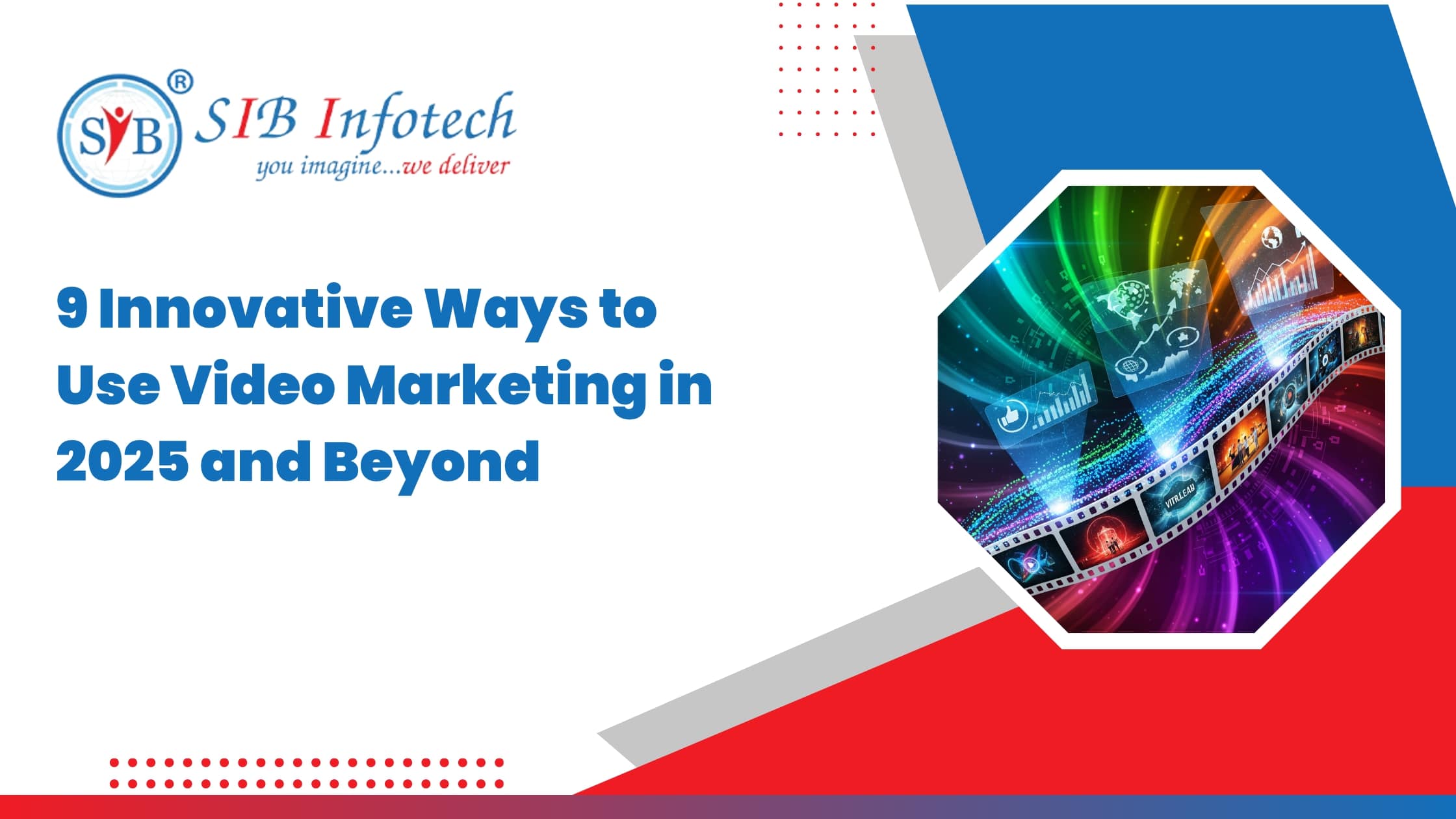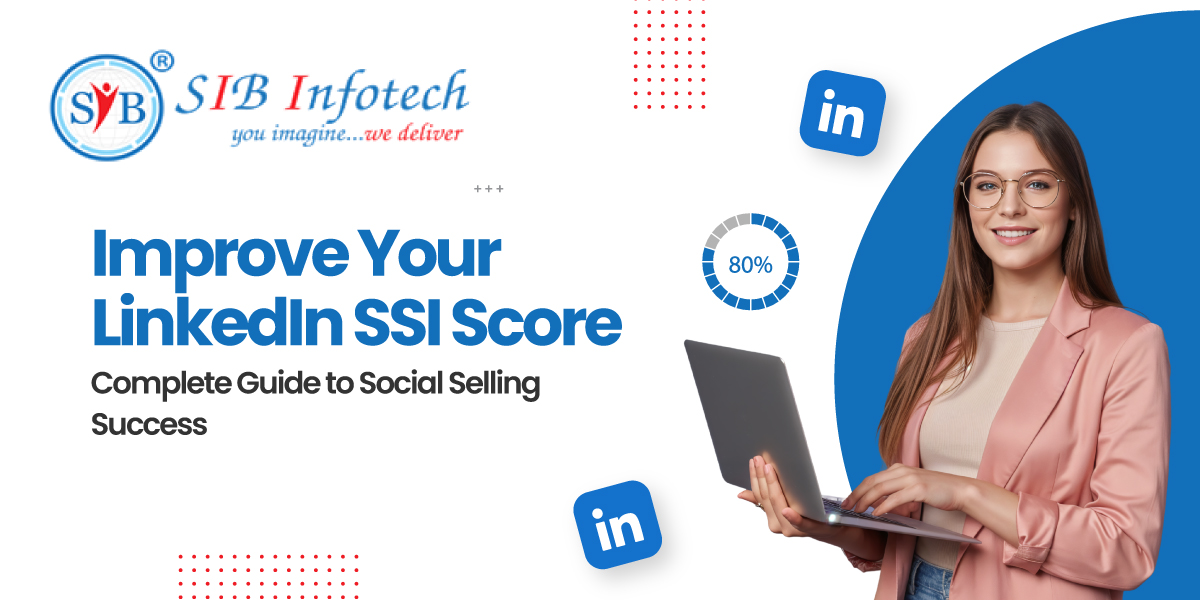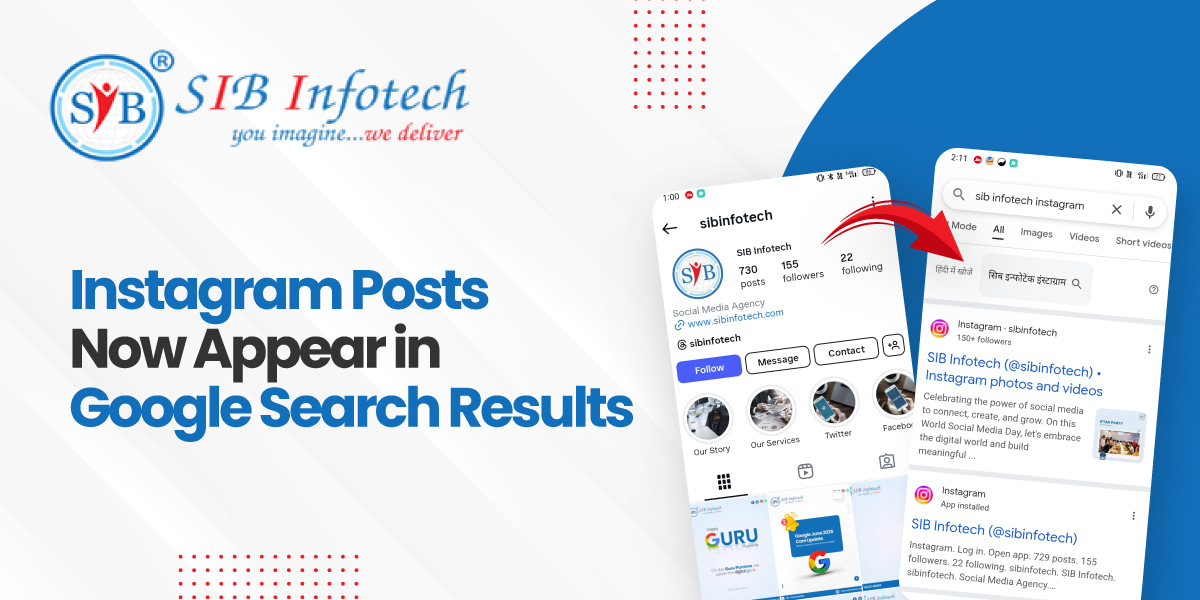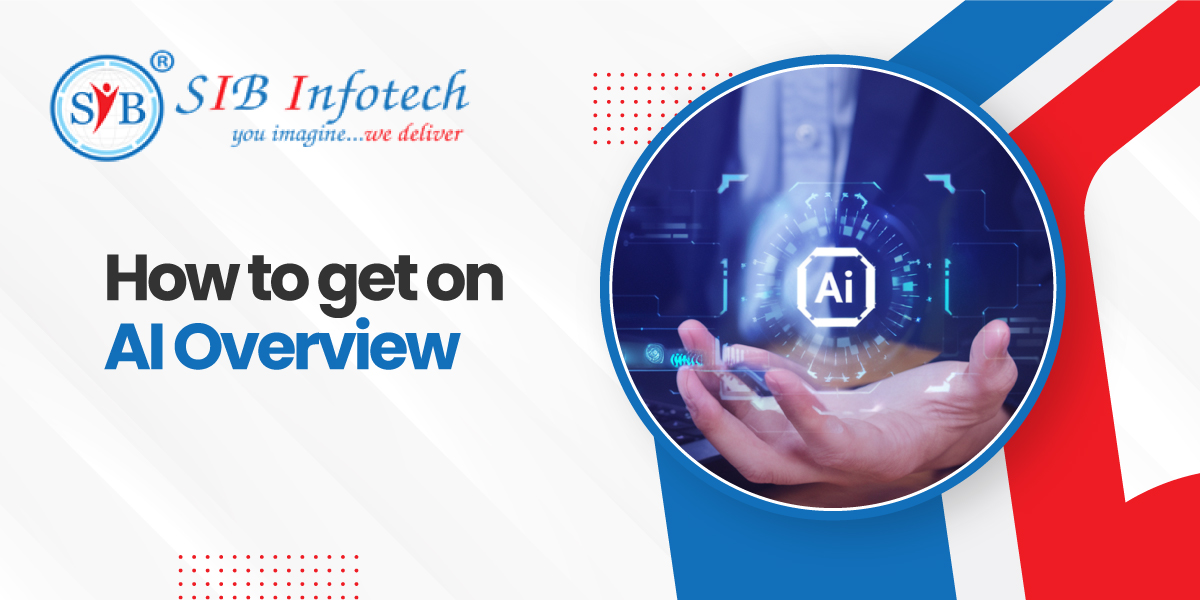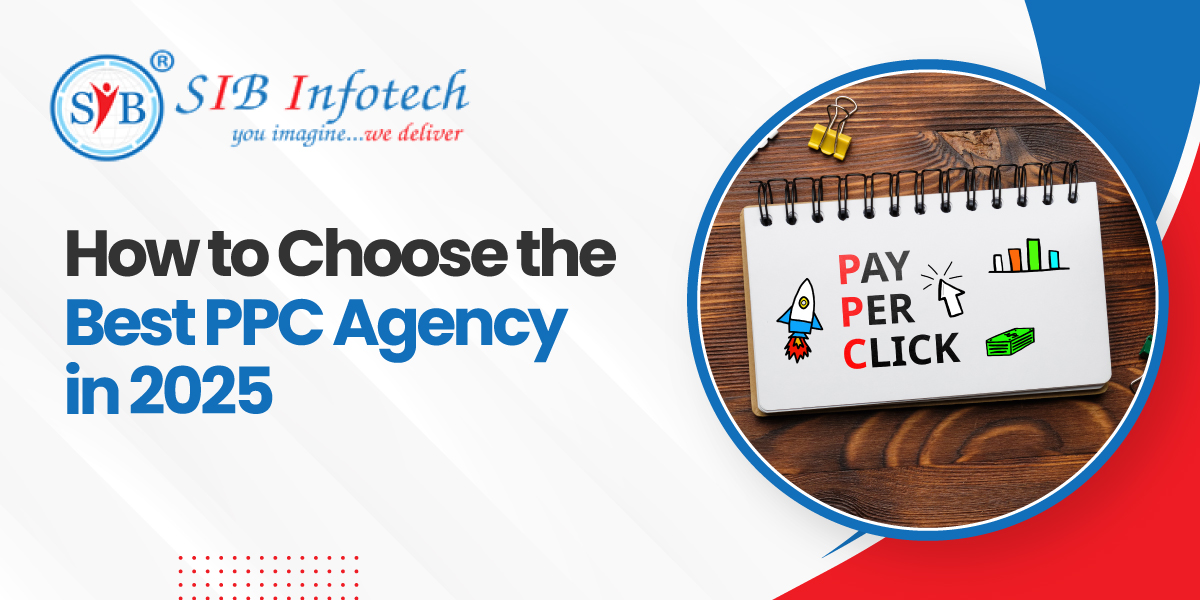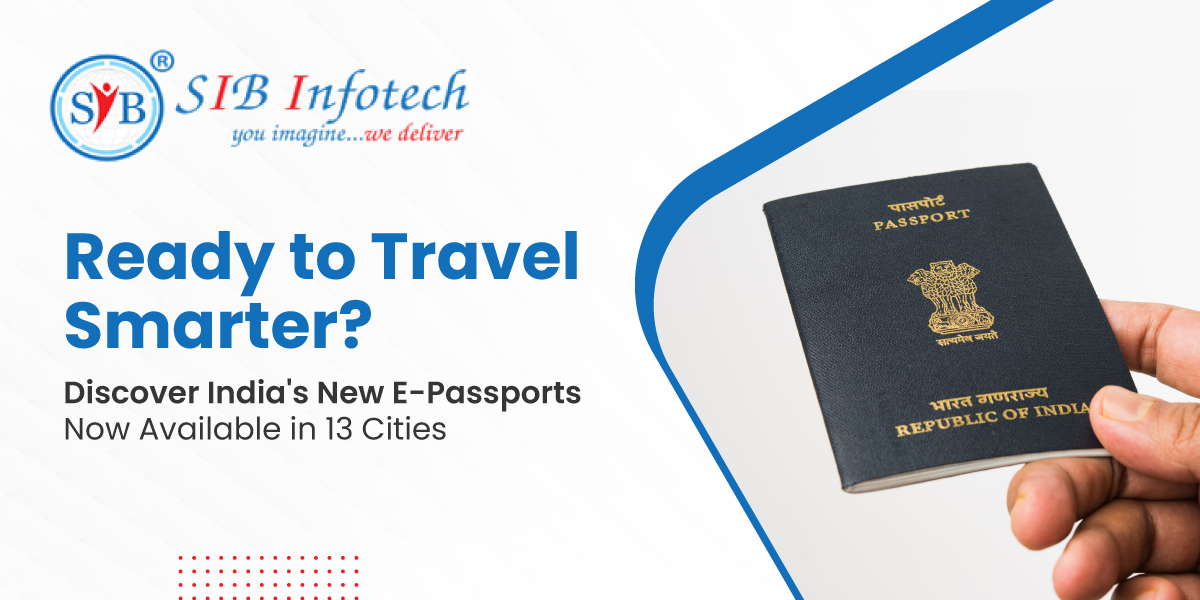9 Innovative Ways to Leverage Video Marketing for 2025 and Beyond
- Aug 30, 2024
How to Choose the Best PPC Company for Your Small Business in India
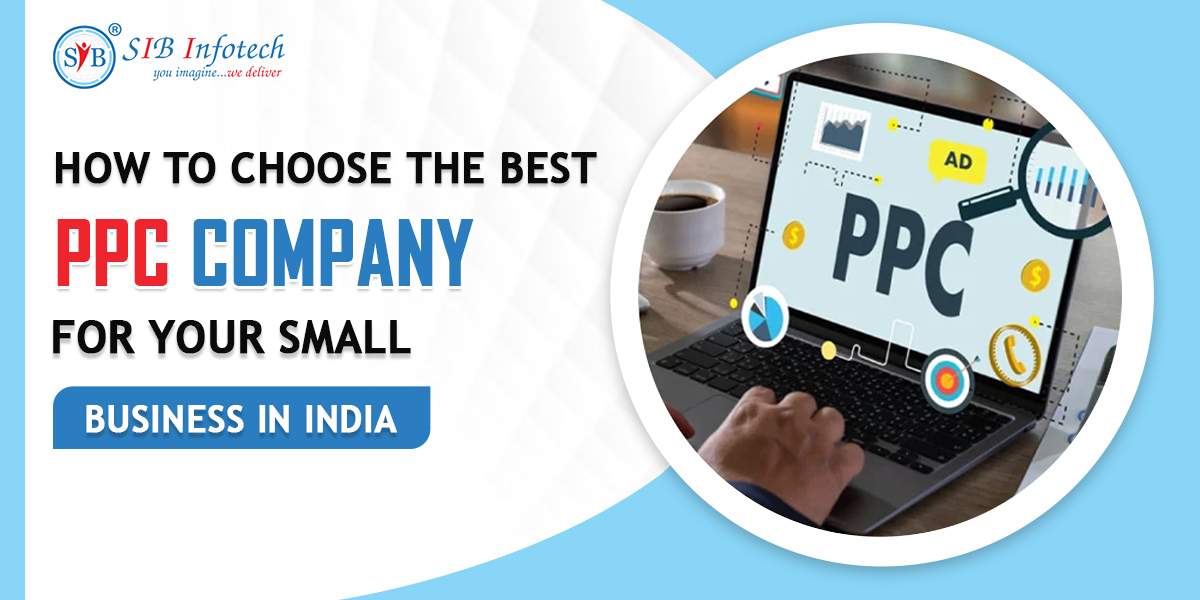
About The Author
Introduction: The High Stakes of PPC Partner Selection
Choosing the right PPC company can make or break your digital marketing success. With India's digital advertising market reaching ₹40,800 crore in FY24 and paid search growing at 32% annually, the stakes have never been higher for small businesses looking to capture their share of this expanding opportunity.
The High Cost of Choosing the Wrong PPC Partner
However, industry research reveals a troubling reality: 70% of businesses switch PPC agencies due to communication failures and performance issues.
Meanwhile, companies typically waste 10–20% of their ad spend on ineffective campaigns. For small businesses operating on tight margins, these statistics represent more than just numbers — they represent potential business failure.
Understanding the Current PPC Landscape in India
Market Dynamics Snapshot
| Metric | Value |
|---|---|
| Total Digital Ad Market | ₹40,800 crore (FY24) |
| Mobile Ad Share | 78% of digital spend |
| Average Google Ads ROI | 200% when properly managed |
| Premier Partner Agencies | Top 3% of certified agencies |
| SMB PPC Adoption | 45% growth year-over-year |
India's digital advertising ecosystem has evolved dramatically, with mobile platforms now commanding 78% of digital media spend and Google Ads delivering an average 200% return on ad spend when properly managed. The market opportunity is substantial, but so are the challenges facing small businesses seeking effective PPC management.
The Skill Gap Reality
Recent industry analysis shows that only the top 3% of agencies achieve Google's Premier Partner status, which requires maintaining a minimum 70% optimization score and managing at least $10,000 in 90-day ad spend. This statistic alone reveals the significant skill gap in the market and explains why so many businesses struggle to find competent PPC partners.
- Only 32% had proper conversion tracking setup across all campaigns
- 68% focused on vanity metrics rather than business impact
- 45% lacked industry-specific experience for their client's business type
- 78% had no systematic testing methodology for ad optimization
Unique Indian Market Characteristics
- 752 million internet users representing 52.4% penetration (still expanding rapidly)
- 22 official languages and 1,600+ spoken languages
- 87% mobile-first users using smartphones as their primary device
- Seasonal patterns tied to festivals and cultural events
- Highly price-sensitive consumer behavior
- Significant regional variations in purchasing power
Small businesses typically invest ₹50,000 to ₹5,00,000 monthly in PPC campaigns, making agency selection a critical business decision. The competitive landscape ranges from individual freelancers charging ₹15,000 monthly to enterprise agencies demanding ₹2,00,000+.
Regional Performance Variations
Tier-1 Cities (Mumbai, Delhi, Bangalore, Chennai):
- Higher competition drives up CPCs by 40–60%
- Better conversion rates due to higher digital literacy
- Premium pricing acceptance for quality products/services
Tier-2 Cities (Pune, Hyderabad, Ahmedabad, Kolkata):
- Emerging markets with 50–70% lower CPCs
- Growing smartphone adoption driving mobile conversions
- Price sensitivity requiring value-focused messaging
Tier-3 Cities & Rural Markets:
- Lowest competition but language barriers remain
- Seasonal and festival-driven spikes in engagement
- Word-of-mouth integration crucial to success
Case Studies: Success and Failure Patterns
Case Study: Mumbai Fashion Retailer (Success Story)
Background: Online clothing store targeting young professionals
Previous Situation: ₹80,000 monthly ad budget, 120% ROAS with previous agency
Challenge: Poor mobile experience, no seasonal optimization, generic targeting
Our Strategic Approach
- Mobile-First Redesign: Optimized entire funnel for mobile users (87% of traffic)
- Seasonal Calendar Implementation: Built 12-month festival and fashion season calendar
- Audience Segmentation: Created 15 distinct audience segments based on style preferences
- Dynamic Remarketing: Implemented product-specific remarketing campaigns
- Regional Language Testing: Added Hindi and Marathi ad variants for local markets
Results After 6 Months
- ROAS improvement: 120% → 340% (183% increase)
- Mobile conversion rate: 1.2% → 3.8% (217% increase)
- Cost per acquisition: ₹850 → ₹320 (62% reduction)
- Revenue growth: 280% increase in attributable revenue
Key Learning
Fashion e-commerce requires deep understanding of seasonal trends, mobile optimization, and audience psychology — expertise that general agencies typically lack.
Market Dynamics and Opportunities Specific to India

Mobile-First Consumer Reality
With 87% of Indian consumers using smartphones as their primary internet device, successful PPC campaigns must be designed mobile-first. This includes:
- Understanding mobile user intent
- Optimizing for slower connection speeds
- Designing mobile-friendly conversion paths
Our mobile optimization research (400+ campaigns) shows:
- Page load time: Every 1-second delay reduces conversions by 12%
- Form fields: Reducing from 8 to 4 improved completions by 67%
- Mobile payments: Supporting UPI/wallets increased conversions by 45%
- Click-to-call: Proper button placement improved mobile conversions by 38%
Regional and Linguistic Diversity Impact
India's 22 official languages offer both opportunities and complexity in PPC campaigns.
- Hindi ads: 25–35% CTR improvement in North India
- Regional languages: 40–55% CTR boost for local services
- English preference: Preferred in Tier-1 cities for premium offerings
- Code-switching: English-Hindi mix works well with millennials
Festival Impact on Performance Patterns
Our analysis shows strong seasonal patterns across categories:
Diwali Season (Sep–Nov):
- Fashion & Jewelry: 400% traffic ↑, 280% conversions ↑
- Electronics: 350% search ↑, 45% conversions ↑
- Home Decor: 500% impressions ↑, 190% ROAS ↑
- Financial Services: 60% drop in activity
Regional Festivals:
- Durga Puja (Bengal): 300% local business activity ↑
- Ganesh Chaturthi (Maharashtra): 250% decoration/sweet shop growth
- Onam (Kerala): 200% ↑ in clothing/food delivery
Wedding Season (Nov–Feb):
- Wedding Services: 600% keyword volume ↑
- Jewelry: 400% impressions ↑, 50% CPC ↑
- Photography: 350% service inquiries ↑
- Hospitality: 200% venue bookings ↑
Government Policy and Regulatory Impact
Digital Personal Data Protection Act 2023
- Explicit consent now required for data collection
- Data localization mandates for Indian user data
- Enhanced cookie disclosure policies
- Tracking restrictions on cross-site behavior
GST Impact on Digital Services
- 18% GST on digital marketing services
- Mandatory compliant invoicing for agencies
- Input tax credit available with optimization
- Cross-border compliance required for global firms
Why Most Small Businesses Choose the Wrong PPC Agency
Essential Qualifications Every PPC Agency Must Have
Google Ads Certifications (Verified)
- At least 50% of account team holds current Google Ads certifications
- Certifications verified through Google Partner Directory
- Advanced specializations relevant to your business type
- Knowledge of latest features (Performance Max, automated bidding)
- Search Advertising: Fundamental for keyword and ad optimization
- Display Advertising: Essential for remarketing and brand awareness
- Shopping Ads: Critical for e-commerce businesses
- Video Advertising: Important for brand building and engagement
- Measurement: Crucial for proper tracking and attribution
Proven Track Record with Similar Businesses
- Case studies from your industry and business size
- Realistic timelines and honest challenge discussions
- Specific metrics achieved (not vague "improved traffic" claims)
- References from businesses with similar budgets
- Evidence of handling similar challenges and market conditions
- Industry relevance: Experience in your specific industry
- Business size similarity: Clients with comparable budgets and scale
- Challenge complexity: Successfully navigated similar difficulties
- Performance consistency: Sustained results over multiple clients
- Innovation examples: Adapted to changing market conditions
Transparent Reporting and Analytics Access
- Direct Google Ads account access with admin permissions
- Comprehensive reporting beyond clicks and impressions
- Integration with Google Analytics and Tag Manager
- Understanding of attribution modeling and cross-channel measurement
- Custom dashboard creation for business-specific KPIs
Understanding of Indian Market Dynamics
- Knowledge of local festivals and seasonal patterns
- Experience with regional language campaigns
- Understanding of mobile-first user behavior
- Familiarity with Indian payment preferences and business practices
- Awareness of regulatory requirements and compliance standards
Advanced Technical Competencies That Separate Great Agencies

Campaign Architecture Excellence
- Tightly themed ad groups (5–20 keywords per group max)
- Comprehensive negative keyword strategies (10,000+)
- Strategic match type implementation
- Scalable, clean campaign organization
- Single Keyword Ad Groups (SKAGs)
- Theme-based grouping by intent/category
- Geographic campaign separation
- Device-specific campaign structure
- Seasonal campaign segmentation
Quality Response Should Include:
- Campaign type selection rationale
- Keyword organization logic
- Negative keyword implementation
- Budget allocation approach
- Scaling strategy
Conversion Tracking Mastery
Advanced Tracking Capabilities:- Phone call tracking with dynamic numbers
- Multi-channel attribution setup
- Offline CRM conversion imports
- Lead scoring via CRM integration
- Cross-device journey tracking
- Level 1 – E-commerce: Revenue tracking, checkout, product views
- Level 2 – Lead Gen: Form submits, phone calls, downloads
- Level 3 – Multi-Channel: Store visits, CRM data, lifetime value
From Our Experience: 60% of agencies have broken tracking, wasting 30–50% of ad spend.
Landing Page Optimization Integration
Key Competencies:- Mobile-first design
- Fast load times (<3 seconds)
- Conversion-optimized form design
- Effective A/B testing
- Trust signals (testimonials, guarantees)
- Speed & technical performance
- Mobile responsiveness
- Message match with ads
- Clear, unique value proposition
- Form simplification
- Trust-building elements
- CTA visibility and copy strength
AI and Automation Competency
Current AI Uses:- Smart bidding (Target CPA/ROAS)
- Responsive search ads
- Dynamic search ads
- AI-driven audience targeting
- Forecasting and simulations
- First-party data targeting
- Lookalike/similar audiences
- Life event and in-market targeting
- Affinity audience segmentation
Competitive Intelligence & Market Analysis
Analysis Techniques:- Google Auction Insights
- Tools: SEMrush, SpyFu, iSpionage
- Manual ad and landing page research
- Market share and pricing studies
- Competitor identification
- Keyword overlap and gap analysis
- Ad messaging comparison
- Landing page and offer strategy
- Seasonal and pricing analysis
Red Flags and Warning Signs to Avoid
Performance Red Flags
Communication Red Flags
Business Practice Red Flags
Financial and Contract Warning Signs:
- Hidden cost structures: Unclear about additional fees or charges
- Pressure for long-term contracts: Insisting on 12+ month commitments upfront
- No direct account access: Refusing to give you admin access to your own accounts
- Unrealistic timeline promises: Claiming immediate results or setup
- Lack of transparency: Unwilling to share detailed processes or methodologies
Operational Red Flags:
- High team turnover: Frequent changes in account management
- Outsourced work: Subcontracting to overseas teams without disclosure
- One-size-fits-all approach: Same strategy for all clients regardless of industry
- No testing methodology: Ad hoc changes without systematic testing
- Poor online presence: Agencies with weak digital marketing for themselves
Detailed Pricing Models and Contract Considerations
Management Fee Structures Compared
| Model | Typical Range | Best For | Advantages | Disadvantages | Hidden Costs to Watch |
|---|---|---|---|---|---|
| Percentage of Spend | 10–20% of ad budget | Large budgets (₹2L+ monthly) | Aligned incentives, scales with growth | Can encourage overspending | Setup fees, additional services |
| Fixed Monthly Fee | ₹20,000–₹80,000 | Predictable budgeting needs | Cost certainty, no spending pressure | May not scale with performance | Creative work, reporting tools |
| Performance-Based | Varies by CPA/ROAS targets | Risk-averse businesses | Pay only for results achieved | Complex measurement, potential disputes | Baseline setup costs, tracking fees |
| Hybrid Model | Base fee + performance bonus | Balanced risk/reward approach | Predictable costs with upside potential | Can be complex to structure fairly | Multiple fee components |
Contract Protection Strategies
Essential Contract Terms:- Trial period clause: 3-month initial period with performance benchmarks
- Account ownership: Clear statement of your ownership of all accounts and data
- Performance standards: Specific metrics and minimum performance levels
- Communication requirements: Response times and meeting schedules
- Termination clauses: 30-day notice with reasonable exit terms
- Data access guarantees: Continued access to all historical data
- Non-compete limitations: Reasonable restrictions on working with direct competitors
- Response time: Email responses within 24 hours, urgent issues within 4 hours
- Optimization frequency: Weekly optimization activities, monthly strategy reviews
- Reporting schedule: Weekly performance summaries, monthly detailed reports
- Meeting cadence: Bi-weekly check-ins, monthly strategy sessions
- Performance improvements: Measurable improvements within 90 days
Implementation and Onboarding Best Practices
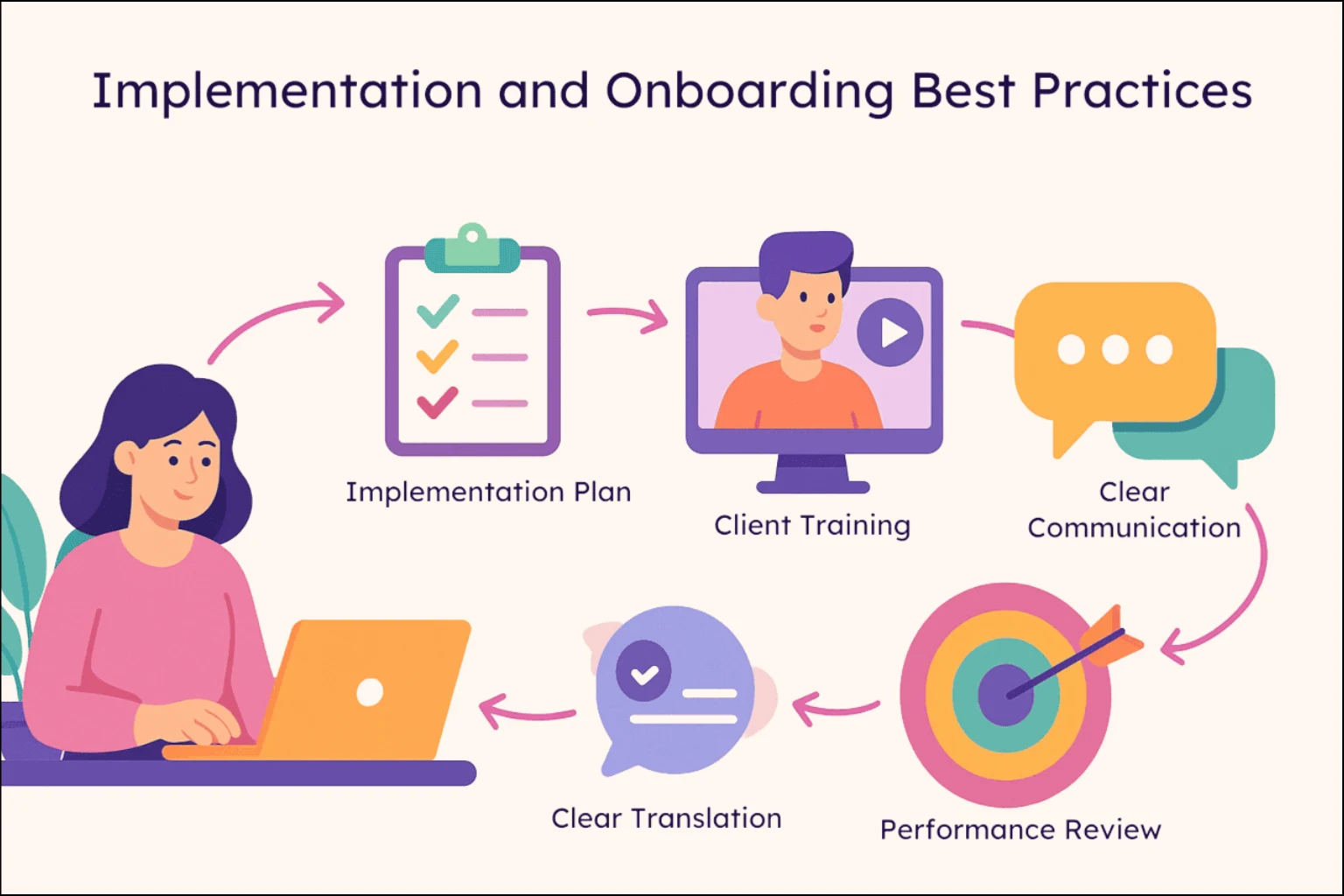
Week 1-2: Account Setup and Foundation
Day 1-3: Account Architecture- Google Ads account creation with proper structure
- Conversion tracking implementation and testing
- Google Analytics and Tag Manager integration
- Initial audience and demographic analysis
- Comprehensive keyword research and competitive analysis
- Audience research and persona development
- Landing page audit and optimization recommendations
- Campaign structure planning and budget allocation
Day 8-14: Campaign Creation
- Campaign and ad group creation with proper settings
- Ad copy development and approval process
- Extension setup (sitelinks, callouts, structured snippets)
- Negative keyword list implementation
Week 3-4: Launch and Initial Optimization
Launch Preparation:- Final campaign review and quality assurance
- Tracking verification and testing
- Budget and bid strategy implementation
- Launch coordination and monitoring
- Daily performance monitoring and adjustments
- Keyword bid optimization based on early performance
- Ad copy performance analysis and improvements
- Quality score optimization and landing page recommendations
Month 2-3: Performance Optimization
Systematic Testing Implementation:- A/B testing framework for ad copy variations
- Landing page element testing coordination
- Audience targeting refinement and expansion
- Bid strategy optimization and automation setup
- Comprehensive performance review and analysis
- Successful campaign scaling strategies
- Underperforming element identification and improvement
- Competitive landscape monitoring and response
Future-Proofing Your PPC Investment
Emerging Trends for 2025-2026
AI and Machine Learning Evolution:- Enhanced automation: More sophisticated bidding and targeting algorithms
- Creative automation: AI-generated ad copy and creative optimization
- Predictive analytics: Better forecasting of performance and market changes
- Voice search optimization: Adapting campaigns for voice-activated searches
- Third-party cookie deprecation: Preparing for cookieless targeting
- First-party data emphasis: Building and leveraging owned customer data
- Privacy-first marketing: Balancing personalization with user privacy
- Consent management: Sophisticated consent and preference systems
- Video advertising growth: Increased emphasis on video content across platforms
- Shopping integration: Enhanced e-commerce features and shopping experiences
- Local advertising advancement: Improved location-based targeting and attribution
- Cross-platform coordination: Better integration between Google, Facebook, and other platforms
Preparing for Future Changes
Strategic Recommendations:- Invest in first-party data collection: Build email lists and customer databases
- Develop video content capabilities: Create video assets for advertising campaigns
- Focus on mobile optimization: Continue improving mobile user experiences
- Build measurement resilience: Implement multiple tracking and attribution methods
- Stay education-focused: Partner with agencies committed to ongoing learning
Key Questions to Ask Potential Agencies
Technical Competence Deep Dive
- Conversion Tracking Mastery
"Walk me through your complete process for setting up conversion tracking for a business like mine..."
Quality Response Indicators: Mentions Google Tag Manager, cross-device tracking, attribution models, data privacy, CRM integration. - Campaign Architecture Philosophy
"How do you approach campaign structure and ad group organization...?"
Look For: SKAGs, match type strategy, negative keyword implementation, scaling. - Automated Bidding Strategy
"What's your approach to automated bidding strategies?"
Quality Indicators: Understanding bidding types, when to use each, data needs, strategy integration.
Strategic Thinking Assessment
- Competitive Analysis Methodology
"How do you research and analyze our competitive landscape?"
Comprehensive Response: Tools, auction insights, copy/landing analysis, positioning, ongoing monitoring. - Industry-Specific Challenges
"What unique challenges have you encountered in our industry...?"
Look For: Deep expertise, concrete examples, regulations, seasonal trends.
Performance and Results Deep Dive
- Performance Benchmarking
"What performance benchmarks do you typically achieve...?"
Response Should Include: Industry averages, real performance examples, strategies for better results. - Problem-Solving Examples
"Can you walk me through a campaign that wasn’t performing...?"
Detailed Response: Data analysis, troubleshooting steps, results, preventive actions. - Scaling and Growth Strategy
"How do you approach scaling successful campaigns...?"
Communication and Service Evaluation
- Account Management Structure
"Who specifically will be working on my account...?"
Important Details: Team roles, hierarchy, continuity plan, escalation process. - Emergency Response and Communication
"How do you handle campaign emergencies...?"
Response Should Address: Monitoring systems, SLAs, escalation, preventive methods. - Reporting and Transparency
"What level of access will I have...?"
Look For: Admin access, reporting cadence, insights, custom dashboards.
Common Mistakes to Avoid During Selection and Management
Selection Phase Critical Errors
- Prioritizing Price Over Value (32% of failed partnerships)
The Mistake: Choosing the lowest-cost agency without considering total value delivered.
Why It Fails:
- Low-cost agencies often lack experience and resources for proper optimization
- Wasted ad spend frequently exceeds savings from lower management fees
- Poor performance damages business growth and opportunity costs
The Solution:
- Calculate total cost of ownership including wasted ad spend
- Focus on return on investment rather than absolute cost
- Consider agency fees as investment in expertise, not just expense
Real Example: Mumbai restaurant chose ₹15,000/month agency over ₹35,000/month specialist. Result: ₹80,000 monthly budget wasted 40% due to poor optimization. Total loss: ₹47,000/month vs ₹35,000 investment in quality agency. - Skipping Reference Verification (28% of poor selections)
The Mistake: Not thoroughly checking references or accepting only agency-provided testimonials.
Why It Happens:
- Business owners feel awkward calling strangers
- Assume written testimonials are sufficient
- Trust agency claims without verification
The Solution:
- Insist on speaking with 3-5 current or recent clients
- Ask specific questions about performance, communication, and problems
- Verify case studies with actual clients when possible - Unclear Success Metric Definition (25% of conflicts)
The Mistake: Not establishing clear, measurable success criteria before engagement.
The Problem:
- Creates conflicts when expectations don't align
- Allows agencies to focus on irrelevant metrics
- Makes performance evaluation subjective
The Solution:
- Define specific KPIs and target ranges during selection
- Establish measurement methodologies and reporting requirements
- Include performance standards in contract terms
Management Phase Common Errors
- Micromanaging Tactics While Ignoring Strategy (35% of relationship issues)
The Mistake: Focusing on daily bid changes while missing strategic opportunities.
Why It's Counterproductive:
- Prevents agencies from implementing systematic optimization
- Misses forest for the trees in strategic planning
- Creates inefficient use of agency expertise
The Solution:
- Focus on weekly and monthly strategic discussions
- Trust daily tactical optimization to agency expertise
- Maintain oversight on business impact metrics - Poor Business Change Communication (30% of performance issues)
The Mistake: Not informing agencies about business changes affecting campaigns.
Critical Information to Share:
- Inventory changes and product launches
- Seasonal business patterns and promotions
- Pricing changes and competitive developments
- Business goal shifts and priority changes - Irregular Performance Review Rhythm (40% of relationship deterioration)
The Mistake: Only reviewing performance when problems occur.
The Solution:
- Schedule monthly strategic performance reviews
- Conduct quarterly relationship and process evaluations
- Address small issues before they become major problems
- Celebrate successes and learn from challenges together
Measuring Long-Term Success and ROI
Comprehensive Performance Framework
- Primary Business Impact Metrics:
- Revenue Attribution: Direct revenue generated from PPC campaigns
- Customer Acquisition Cost: Total cost to acquire each new customer
- Customer Lifetime Value Impact: Long-term value of PPC-acquired customers
- Market Share Growth: Competitive position improvement through PPC
- Brand Awareness Metrics: Assisted conversions and brand search growth - Campaign Performance Indicators:
- Return on Ad Spend (ROAS): Revenue divided by ad spend
- Cost Per Acquisition (CPA): Total spend divided by conversions
- Conversion Rate: Percentage of clicks that become customers
- Quality Score: Average quality score across all keywords
- Impression Share: Percentage of available impressions captured - Operational Excellence Metrics:
- Account Health Score: Overall optimization and structure quality
- Testing Velocity: Number of meaningful tests conducted monthly
- Optimization Frequency: Regular improvement implementation
- Competitive Position: Performance vs industry benchmarks
- Innovation Adoption: Implementation of new features and strategies
ROI Calculation Methodology
- Basic ROI Formula:
ROI = (Revenue - Total PPC Investment) / Total PPC Investment × 100 - Advanced ROI Considerations:
- Attribution modeling: Credit assignment across multiple touchpoints
- Assisted conversions: Value of campaigns that assist but don't close sales
- Lifetime value integration: Long-term customer value vs acquisition cost
- Incremental lift: Revenue generated above baseline without PPC
- Cross-channel impact: PPC influence on other marketing channels
Industry Benchmark Comparisons
- Business Type – Target ROAS – Acceptable CPA – Quality Score Target
- E-commerce: 300-500% – <30% of AOV – 7+ average
- Local Services: 400-600% – <20% of LTV – 8+ average
- B2B Services: 300-400% – <10% of LTV – 6+ average
- Healthcare: 500-800% – <15% of LTV – 7+ average
- Financial Services: 200-300% – <5% of LTV – 8+ average
Conclusion: Your Path to PPC Partnership Success
Choosing the Right PPC Company for Your Small Business
Selecting the best PPC company for your small business requires careful evaluation of technical competence, communication quality, relevant experience, and strategic alignment.
While India's ₹40,800 crore digital advertising market presents enormous opportunities, success depends on partnering with agencies that combine strategic thinking with execution excellence.
Essential Success Principles
- Prioritize competence over cost – invest in expertise that delivers results.
- Verify credentials independently – don't accept claims without validation.
- Start with trial periods – prove capabilities before long-term commitments.
- Maintain account ownership – ensure data access and control.
- Define success metrics clearly – align expectations from day one.
- Plan for the future – choose partners who adapt to the changing digital landscape.
- Focus on partnership, not just service – build collaborative relationships.
Your Next Steps
- Use our evaluation framework to systematically assess potential agencies
- Apply the 4-week selection process for thorough due diligence
- Implement performance measurement systems from day one
- Maintain regular communication and review cycles for ongoing success
- Stay informed about industry trends to guide strategic decisions
Why This Choice Matters
Remember: The agency you choose will significantly impact your digital marketing success and business growth trajectory. This decision affects not just your advertising performance, but your competitive position, market share growth, and long-term business sustainability.
The investment in proper agency selection—following comprehensive evaluation, verification, and strategic alignment—typically pays for itself within the first quarter through improved performance and reduced wasted spend. Choose wisely, monitor actively, and build a partnership that drives sustainable business growth.
Frequently Asked Questions
How much does a PPC company charge in India?
- They typically charge ₹20,000–₹80,000/month for management, plus 15–20% of ad spend.
- Small businesses usually invest ₹50,000–₹2,00,000 monthly including ads and fees.
How do I choose the best PPC company in India?
- Check for Google Ads certification, case studies, and transparent reporting.
- Evaluate their technical skills, experience, communication, pricing, and avoid unrealistic promises.
Is hiring a PPC agency worth it for small businesses?
- Yes, if your ad budget is ₹50,000+ as agencies improve performance and reduce wasted spend.
- They save time while applying advanced strategies you may not handle alone.
What are red flags when choosing a PPC company?
- Agencies that guarantee results or refuse references.
- Those who deny account access, lack certifications, or pressure for long-term contracts.
How long does it take to see results from a PPC agency?
- Expect initial improvements within 2–3 months.
- Significant, stable results by 4–6 months as campaigns optimize with data.
What ROI should I expect from PPC advertising in India?
- Well-managed PPC campaigns usually achieve 200–400% ROI.
- It varies by industry, conversion rates, and optimization quality.
Should I manage Google Ads myself or hire an agency?
- Hire an agency if your ad budget is ₹50,000+ and you lack time or expertise.
- They deliver better results and continuous optimization.
What services should a PPC company provide?
- Campaign setup, keyword research, ad creation, conversion tracking, and reporting.
- Ongoing optimization and strategic consultation.
How much should I budget for PPC advertising in India?
- Plan for ₹50,000–₹3,00,000/month depending on goals.
- Allocate 70–80% on ad spend and 15–20% for management.
Should I use Google Ads or Facebook Ads for my business?
- Use Google Ads for high-intent searches and Facebook Ads for brand awareness.
- Most businesses benefit from using both strategically.
.webp&w=3840&q=100)

